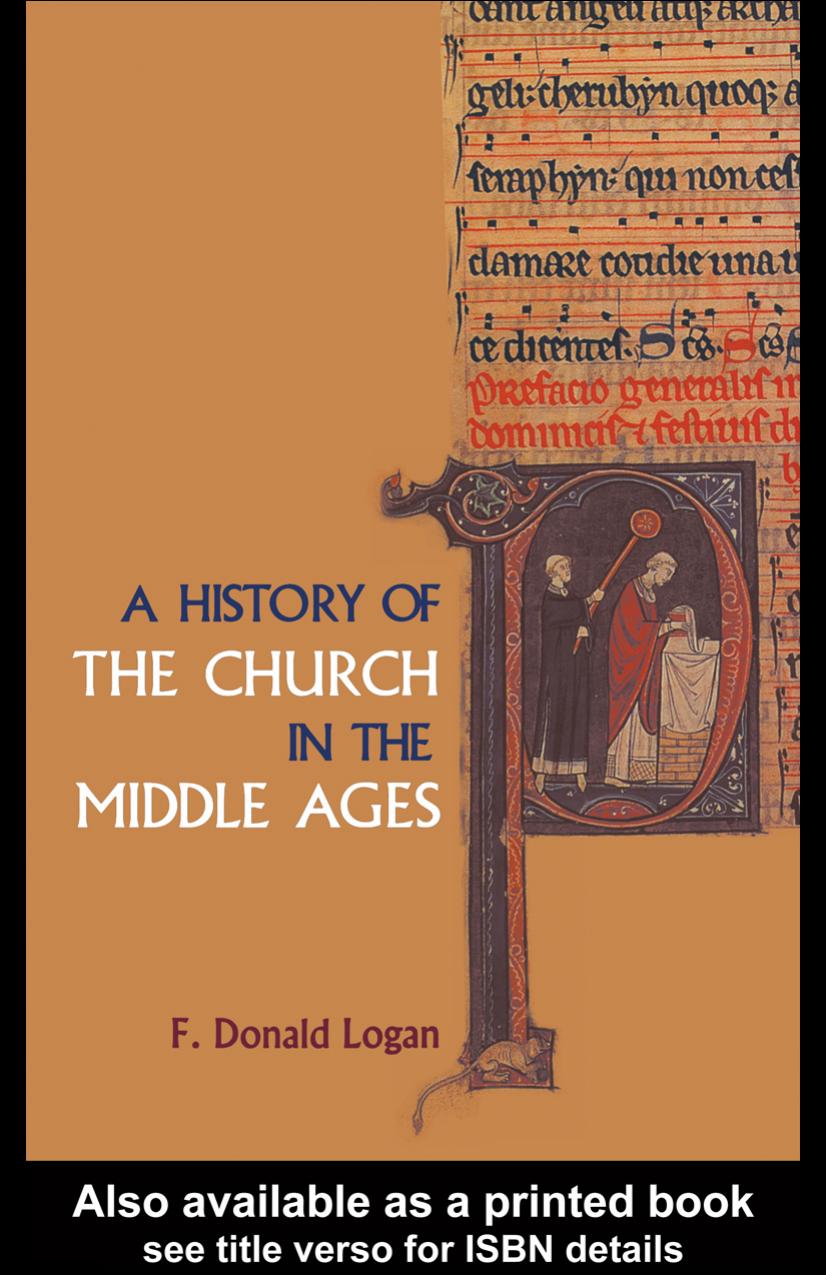A History of the Church in the Middle Ages by F Donald Logan

Author:F Donald Logan [Logan, F Donald]
Language: eng
Format: epub, pdf
ISBN: 9780415669948
Publisher: Routledge
Published: 2012-08-17T00:00:00+00:00
Nonetheless, the archbishop ordered his cathedral clergy to withdraw the interdict, if suitable witnesses testified to the manâs reconciliation. And the crisis ended. Hildegard was then 80 years old and had only six more months to live. She died on 17 September 1179 at Rupertsberg. Her body now rests at Rüdesheim, across the river from Bingen.
If during her lifetime Hildegard was best known as a visionary prophet, she is best known to the modern world as an author. To mention her writings raises instantly the question of authenticity of the writings attributed to her. Within a decade of her life a dossier of writings, which the compilers attributed to Hildegard, was assembled at Rupertsberg. We cannot be equally certain of the authenticity of all the works in this codex and in other collections. Accepting that she used secretaries and scribes, there can be little if any doubt that she was the author of the Scivias and the considerable correspondence. The Liber divinorum operum (âBook of Divine Deedsâ), a description of later visions, raises some questions. Examination of the earliest extant manuscript (at Ghent) suggests to different scholars distinct alternatives, one being her non-authorship, although the evidence for this position seems not compelling. With scholarship divided about some of the works attributed to her, one might put aside for now books of questionable authenticity. These would include a book on medicine. Also, over 70 compositions of sacred music with words and music which are attributed to her clearly came from her monastery at Rupertsberg but might have come from her supervision rather than directly from her hand â still a notable achievement â although her amenuensis wrote, while away, how he missed âthe voice of her melodies and a tongue not heard beforeâ. When the air is cleared of mist, all doubt may well be dissipated and Hildegardâs achievement seen in an even brighter light. Yet were she to have written nothing but her letters and the Scivias, her place would be absolutely firm as a luminous figure of the twelfth century.
Two copies of the Scivias which were made during her lifetime at her monastery have survived, one, lost in 1945, now only in a photographic copy. They contain her visions in three books of unequal length. Each section describes a vision and then presents Hildegardâs interpretation. They cover a wide range of topics concerning the Christian life for religious and laity alike.
The nature of these visions interested her contemporaries as it indeed interests moderns. The insistent Guibert of Gembloux, a Walloon monk who later became her secretary, asked Hildegard about how she experienced her visions:
Is it true that you do not remember at all what you have spoken in a vision once your secretaries have written it down? Do you dictate them in Latin or in German with someone translating the German into Latin? Have you become learned in the scriptures by study or by divine inspiration?
Download
A History of the Church in the Middle Ages by F Donald Logan.pdf
This site does not store any files on its server. We only index and link to content provided by other sites. Please contact the content providers to delete copyright contents if any and email us, we'll remove relevant links or contents immediately.
| Africa | Americas |
| Arctic & Antarctica | Asia |
| Australia & Oceania | Europe |
| Middle East | Russia |
| United States | World |
| Ancient Civilizations | Military |
| Historical Study & Educational Resources |
The Third Pole by Mark Synnott(709)
Money for Nothing by Thomas Levenson(663)
The Economist (20210109) by calibre(624)
Christian Ethics by Wilkens Steve;(607)
Made in China by Anna Qu(585)
100 Posters That Changed The World by Salter Colin T.;(540)
The Irish Buddhist by Alicia Turner(527)
Reopening Muslim Minds by Mustafa Akyol(520)
The Age of Louis XIV: The Story of Civilization by Will Durant(508)
Routledge Handbook of Contemporary India by Knut A. Jacobsen(504)
Nonstate Warfare by Stephen Biddle(499)
Ideology by Eagleton Terry;(492)
Culture by Terry Eagleton(490)
The Great Pyramid Void Enigma by Scott Creighton(486)
The Shortest History of China by Linda Jaivin(471)
Objects of Vision by Saab A. Joan;(460)
Banaras: CITY OF LIGHT by Diana L. Eck(456)
The Jews of Silence: A Personal Report on Soviet Jewry by Elie Wiesel(455)
Sybille Bedford by Selina Hastings(451)
